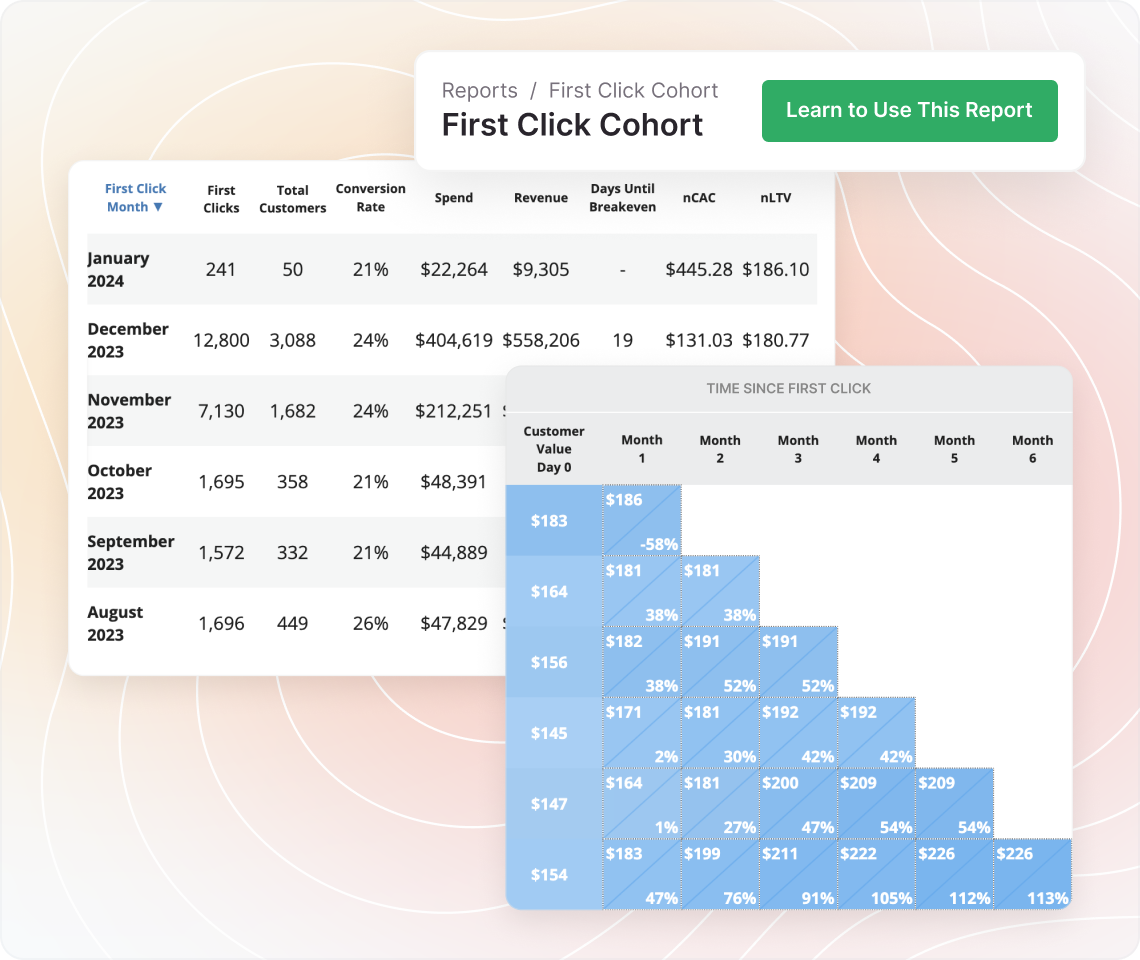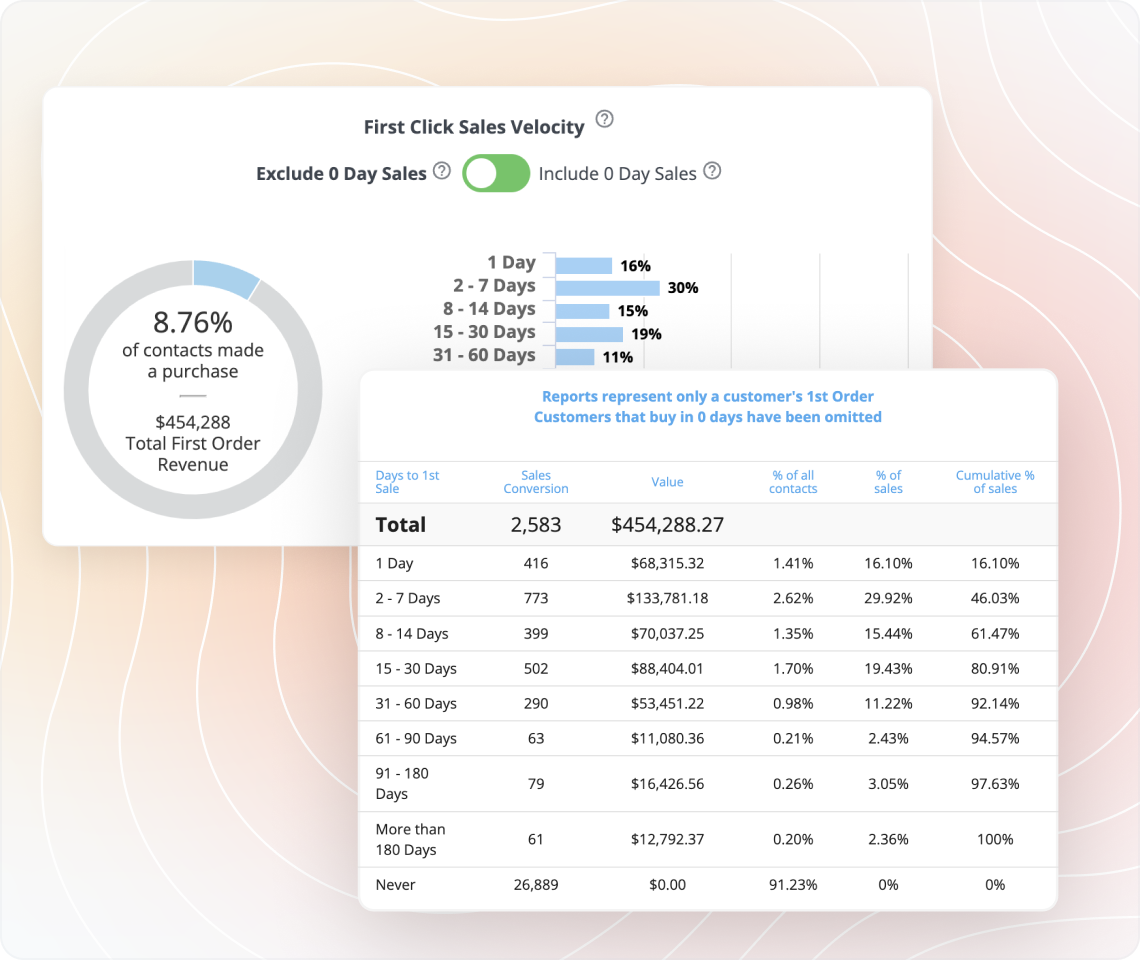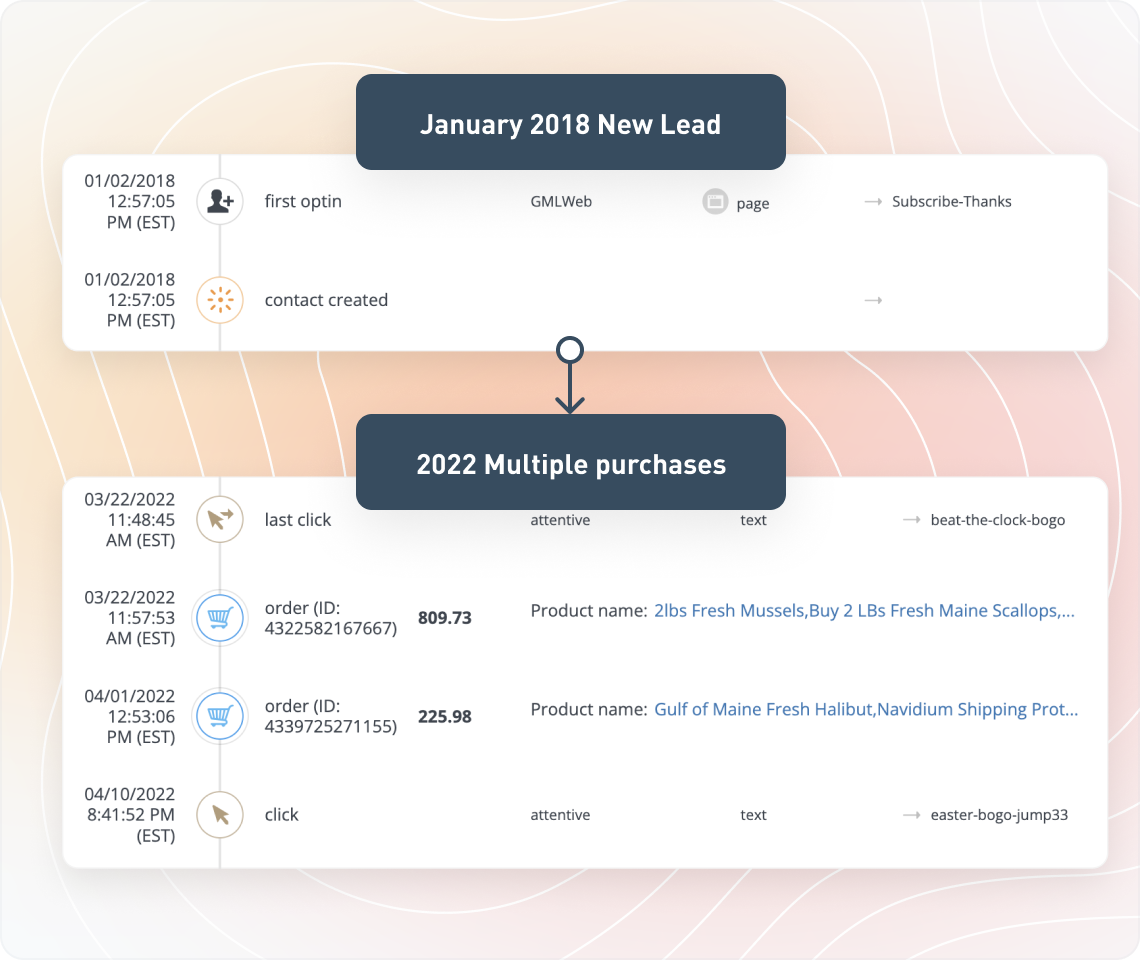FACEBOOK PIXEL vs Wicked Reports
The Facebook Pixel attempts to track people using a 3rd party pixel that is unable to get accurate data or prove its conversion data is real.
Wicked Reports is a marketing attribution platform using 1st party data conversions it can prove, that then automatically analyzes and suggests optimizations based on more accurate data.
Wicked Reports can push data into Facebook for both TOF and BOF conversions to improve accuracy and performance.
Conversion reporting using just the Facebook Pixel leads to extreme difficulty to prove their accuracy, require hours per week to mine the data, and still doesn’t drive meaningful results.
Wicked Reports proves accuracy by connecting marketing clicks to your CRM and Shopping Cart conversions. Save 10 hours a week with Attribution Analysis Automation - no more online spreadsheet hell.
Facebook Ad Manager reporting is like other
attribution solutions out there
Tons of training, help docs, and long YouTube videos on how to use the results. But the data is bad, and once you get a system for analysis, you have to commit to doing this over and over every day.
 Do you have that kind of time?
Do you have that kind of time?
✗ This is true of most attribution platforms.
Automated Attribution Analysis
That’s why Wicked Reports set out to turn marketing attribution into a TIME SAVINGS with
the biggest feature differentiator we have on native Facebook Pixel reporting
MARKETING ADVANCED RULES
Wicked Reports mines 216 data points per inbound marketing click to determine when you should act, based on your custom marketing KPIs and marketing funnel.
We find opportunities to scale ad spend at a profit based on advanced rules - Without you needing to login!
✗ Facebook's data is not good enough to set a rule like this and profit from it.
Optimize Your Ad Spend
Wicked Reports is also your Ad Budget CFO - ruthlessly making sure you aren’t wasting money, and alerting you if you are - this Meta ad set has a high CAC, time to make some adjustments.
Unlocking Hidden Profits
Wicked Reports mines your customer trends for things that are important - beyond attribution. Facebook has no concept of this - you have to spend 10 hours a week to try and spot it with the naked untrained eye. High LTV to AOV - Wicked spots it for you.
Unlocking Profitable Conversions
Top of the funnel paid marketing drives brand, email, and SMS conversions at the bottom of the funnel. If you know what works at the Top, you can make more at the bottom. Wicked makes this easy to see visually right on the home page. Facebook has no concept of a visual customer journey.
It’s not just Facebook - no one else is doing this.
Why choose Wicked Reports?
Improve your marketing strategy
Wicked Reports provide advanced, custom marketing attribution for full funnel conversions. You can set your own time window lookbacks, look forwards, include/exclude recurring revenue, all on the fly.
Optimize Your Marketing Insights
Wicked Reports’ FunnelVision can dramatically improve the clarity on WHERE in the funnel your marketing is converting.
Instantly Boost Conversions
Wicked allows on the fly custom Meta view attribution also. Determine your preference on view-assisted sales conversions, and immediately see the impact on your Meta CAC and ROAS results, down to the ad level.
Customer LTV
Customer LTV is at the heart of Wicked Reports attribution. First click cohort report can tie top of the funnel cold traffic clicks to customer LTV.
This insight allows businesses to refine marketing strategies, allocate resources efficiently, and maximize the impact of their campaigns, ultimately enhancing long-term customer relationships and overall success in the digital marketplace.

Delayed conversion time
Predictive behaviors offer valuable insights into conversion pathways, but skepticism can arise due to seemingly impressive data. Wicked Reports addresses this concern by providing users with the capability to audit every attributed dollar.
This transparency not only ensures the accuracy of reported metrics but also instills confidence in data-driven decision-making, establishing a trustworthy foundation for strategic marketing efforts.

We are truly obsessed with Customer Success
- Live chat manned by real humans, not AI bots
- Dedicated slack channels for agencies
- Dedicated marketing strategist to setup your initial Attribution Automation Goals
Save 10 hours a week, drive down CAC, and hit your ROAS goals.

You are up next!




